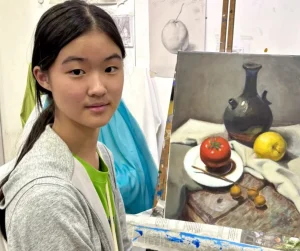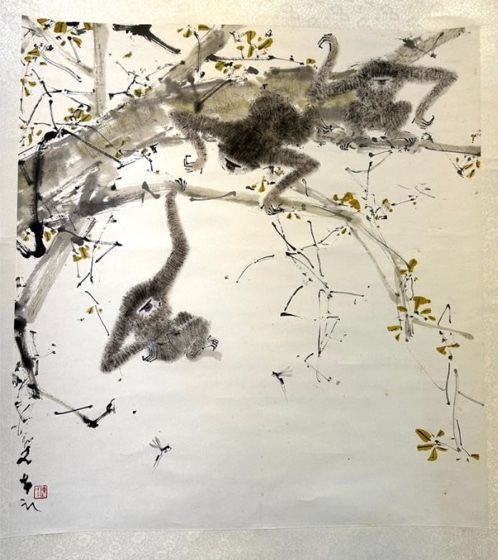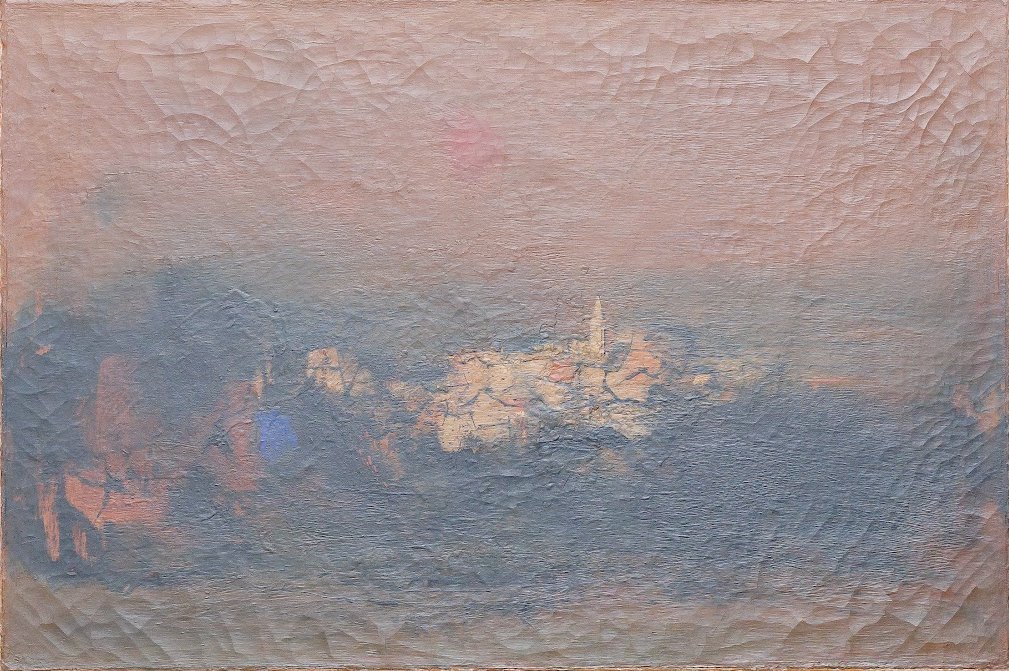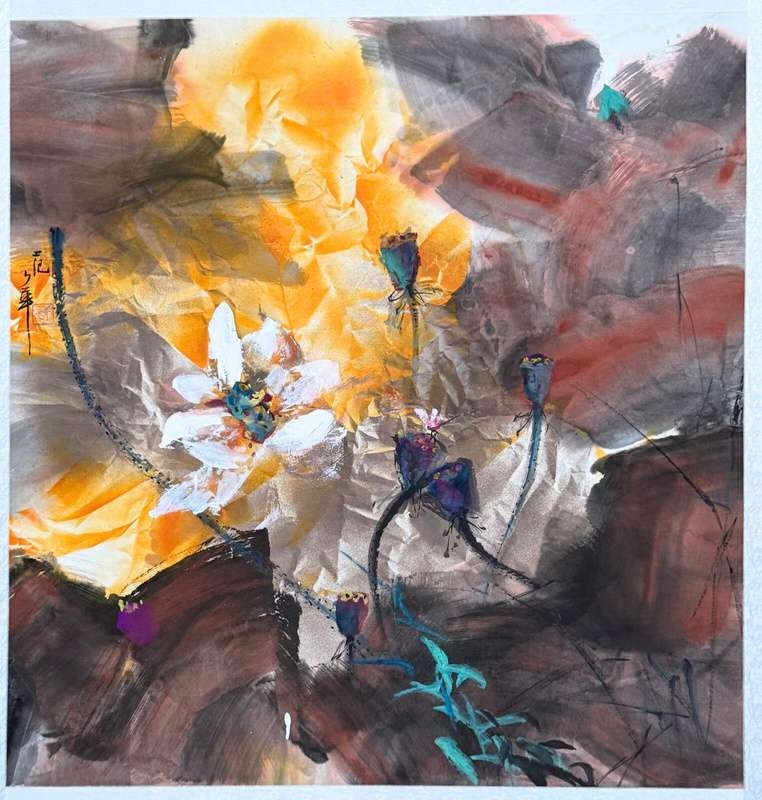Acrylic Painting on Canvas Team Bonding Art Jamming Singapore Visual Arts Centre
























Yeo Hoe Koon
Oil on Canvas
64 x 89.5 cm
Price Range: $16,000 - $20,000

Yeo Hoe Koon
Oil on Canvas
101 x 123 cm
Price Range: $26,000 - $32,000

Chen Wen Hsi
Chinese Ink and Color on Paper
50 x 54cm
Price Range: SGD $42,000 - $50,000

Cheong Soo Pieng
Red Tone
61 x 91.5cm
Price Range: SGD $108,000 - $138,000

Cheong Soo Pieng
Abstract Landscape
50 x 61cm
Price Range: SGD $95,000 -$128,000

Fan Shao Hua
Chinese Ink and Colour on Paper
100 x 100cm
Price Range: SGD $9,800 - $14,800

Fan Shao Hua
Chinese Ink and Colour on Paper
100 x 100cm
Price Range: SGD $8,800 - $13,800

 Chinese Ink Painting has a rich history within the arts culture, and here is a little bit fun fact for you and I. The practice of Chinese Ink Painting dates back to the Tang dynasty (618- 907), it is widely used to depict the lives of the emperors and their ladies. Slowly, the painting of landscape gained its popularity during the Tang dynasty as well. Fast forwards to the 1800s and the 1900s, Western arts exerted its influence onto the Chinese arts. Some painters returned to their homelands after studying aboard and integrated best of both into their work. Now let us dive in and explore the beauty of Chinese Ink Painting together.
Chinese Ink Painting has a rich history within the arts culture, and here is a little bit fun fact for you and I. The practice of Chinese Ink Painting dates back to the Tang dynasty (618- 907), it is widely used to depict the lives of the emperors and their ladies. Slowly, the painting of landscape gained its popularity during the Tang dynasty as well. Fast forwards to the 1800s and the 1900s, Western arts exerted its influence onto the Chinese arts. Some painters returned to their homelands after studying aboard and integrated best of both into their work. Now let us dive in and explore the beauty of Chinese Ink Painting together.
 Perhaps you’ve tried oil painting, or even acrylic painting, but just a disclaimer: Chinese ink painting is nothing like that. Chinese ink painting is more similar to watercolor, and the key to it lies in the poetic feeling it is meant to achieve. The ratio between water and ink is what’s most important here. For those who have not tried this art form, do not hesitate to give it a try – it will open your eyes to a whole new world of creative expression! Chinese Ink Painting is different from other forms of painting. It relies on the artist’s ability to capture the essence of the subjects and using limited inks and colors to portray it on to a painting. The aesthetic principles of Chinese Ink Painting rely heavily on the spirit of the subject, not the likeness of forms.
Perhaps you’ve tried oil painting, or even acrylic painting, but just a disclaimer: Chinese ink painting is nothing like that. Chinese ink painting is more similar to watercolor, and the key to it lies in the poetic feeling it is meant to achieve. The ratio between water and ink is what’s most important here. For those who have not tried this art form, do not hesitate to give it a try – it will open your eyes to a whole new world of creative expression! Chinese Ink Painting is different from other forms of painting. It relies on the artist’s ability to capture the essence of the subjects and using limited inks and colors to portray it on to a painting. The aesthetic principles of Chinese Ink Painting rely heavily on the spirit of the subject, not the likeness of forms.


 Date: Every Wednesday
Time : 7.30pm-9.45pm
Venue: Visual Arts Centre (Studio)
Date: Every Wednesday
Time : 7.30pm-9.45pm
Venue: Visual Arts Centre (Studio)
水墨画在艺术文化中有着悠久的历史,这对您和我来说都是一个有趣的事实。水墨画的历史可以追溯到唐朝(618-907), 被广泛用于描绘水墨画。皇帝及其夫人的生活。慢慢地,山水画在唐朝也开始流行。快进到1800年代和1900年代,西方艺术对中国艺术产生了影响。 一些画家在学习之后回到了家乡,并把两者中的最好的融入了他们的作品。现在,让我们一起探索水墨画的美丽。

也许您尝试过油画,甚至是丙烯画,但都可以免责声明:水墨画根本不是这样。水墨画更类似于水彩画,其关键在于它要达到的诗意感。 水和墨水的比例在这里最重要。对于那些尚未尝试过这种艺术形式的人,请不要犹豫,尝试一下-它会打开您的视野,打开一个崭新的创意表达世界! 水墨画不同于其他形式的绘画。它依赖于艺术家捕捉主题本质的能力,并使用有限的墨水和颜色将其描绘在绘画上。 水墨画的美学原理在很大程度上取决于主题的精神,而不是形式的相似性。
不知道在哪里可以学习水墨画?前往视觉艺术中心做吧!在视觉艺术中心,您将通过逐步的指导和指导来学习由我们的老师带领的水墨书画,以确保您了解水墨书画的原理。 在每节课中都完成一项完整的工作!此外,我们负担得起的水墨画课程提供基础的艺术指导。这是桥接任何先前的知识,并通过逐步的方法更好地指导初学者。 您将从本课程中学到的一些技巧是构图,笔法和笔触技巧。

水墨画课程可以让您轻松自在,可以摆脱繁重的工作量,也可以使您的一天焕然一新。 这不是费劲的活动,您会感到疲倦。尽管如此,它更像是家庭和朋友的活动。您可以拖动朋友和家人来做,一起体验水墨画的美,绘画不同的对象,例如“四个先生”-梅花,菊花,竹子,兰花,花鸟,并介绍山水画。
水墨画是中国艺术的代表。水墨画的基本特征是水墨,黑白相间。深入研究中国水墨艺术,有牡丹,鸟等花朵的细致绘画,其鲜艳的色彩也被称为中国水墨画。水墨画的特点是题材逼真,近距离主题抽象,色彩微妙,意境丰富。用盛满墨水和水的刷子在宣纸上画中国水墨画。水墨画涉及融合和机智的构图,表达主题的精髓和精神元素。
|
|
|||||||||||||||||||||||||||||||||||||||||||||||||||||||


SAT |
10:30am - 12:45pm1pm - 3pm
|
SAT |
|
10:30am - 12:45pm1pm - 3pm
|
|



Address:
10 Penang Road, #01-02 Dhoby Ghaut Green,
Singapore 238469
Exit from Dhoby Ghaut MRT Station Exit B and turn left, we are there in 30m!

Address:
AZ@Paya Lebar, 140 Paya Lebar Road, #03-04,
Singapore 409105
Exit from Macpherson MRT Station Exit A and turn left, we are right across the road, 1 minute walk away!
Have any questions? Please drop us an enquiry form and we’ll respond to you as soon as we can!
"*" indicates required fields
Click and get to our WhatsApp
Embark on a captivating journey into the vibrant world of digital art! Our Foundation in Digital Art workshop invites budding creatives aged nine and above to unleash their imagination and hone their artistic skills in a dynamic, supportive environment. From mastering basic digital tools to crafting mesmerizing digital masterpieces, children will explore a spectrum of techniques guided by seasoned mentors. Through hands-on activities and interactive sessions, participants will discover the endless possibilities of digital expression while fostering creativity and critical thinking. Join us for an exhilarating adventure where young artists transform ideas into stunning visual realities, igniting a passion for digital art
In the Batik Introduction Handkerchief Painting workshop, participants will learn the traditional art of batik, a wax-resist dyeing technique originating from Indonesia. The workshop begins with a brief history and overview of batik, highlighting its cultural significance and various techniques. Participants will then observe a demonstration of applying wax with tjanting tools and dyeing the fabric. Following the demonstration, each participant will design and create their own batik handkerchief, applying wax to create patterns and then dyeing their fabric. The workshop concludes with a group discussion, allowing participants to share their creations and reflect on their learning experience.